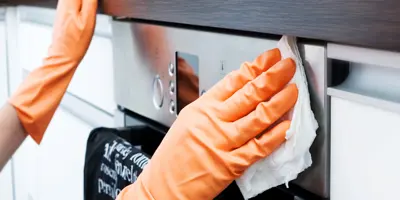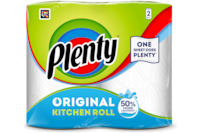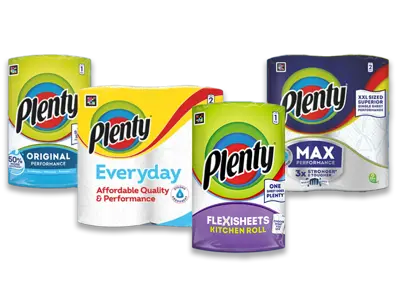22 people found this helpful
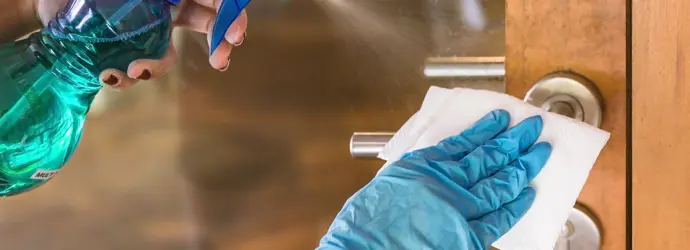
So where can bacteria be found in the kitchen? And where does the bacteria live, aside from the really obvious places? Read on to find out where, plus how to kill germs in the kitchen.
Your guide to hidden bacteria in the kitchen
Germs in the kitchen are hiding, but not for much longer. Here are the not-so obvious places where bacteria can be found in your kitchen.
- Fridge handles. Germs in the kitchen are often found on refrigerator door handles [1] And it's easy to see why that's the case. You might want to grab something from the fridge mid-recipe without having a chance to wash your hands. One report shows refrigerator handles have roughly the same number of bacteria as a toilet handle. [2]
- Rubber seals. The rubber seals around food storage containers tested positive for Salmonella, yeast, and mould.
- Pizza cutters. The inner fixings of a pizza cutter are hard to clean too – they tested positive for E. coli.
- Kitchen sinks. When you’re washing your plates and cooking utensils, some bacteria is bound to form around the sink and plughole. Any raw meat juices or dirt from vegetables clings around sinks meaning that there are 11 million germs on every 10 cm of your sink. [3]
- Kitchen sponges. You use it to clean so much around the kitchen, but you might not realise how dirty sponges get. Kitchen sponge bacteria gathers as you clean around your kitchen, wiping down dirty surfaces. How dirty is a kitchen sponge? The average sponge carries over 362 million germs per gram [4], which is why sponge hygiene is key.
Now you know how dirty the hidden parts of your kitchen are – and how dirty a kitchen sponge can be. Now it's time to find out how to tackle those tricky corners in the kitchen.
Tips for tackling germs in the kitchen
- Clean high-traffic areas every day. Give areas that are touched frequently such as handles and taps a wipe with antibacterial spray and a good strong kitchen paper once a day.
- Use kitchen paper for dirty tasks. Up your hygiene by using kitchen paper instead of a sponge for those germy jobs like wiping around the plug hole.
- Use an old toothbrush for getting into corners. Bacteria tend to live in hard-to-reach areas – so grab an old toothbrush to clean those tight spots.
- Clean the sink – properly. It’s easy to give the sink a final wipe – but that’ll just leave your kitchen sponge germs in other areas. Finish off your sink cleaning with some antibacterial spray and some strong kitchen paper.
It’s also worth remembering one report [5] suggests that cleaning sponges gets rid of the weaker bacteria, but strongest ones will survive and reproduce where the weak ones were. And if sponges can’t be cleaned properly, it means a lot of them will need to be disposed of.
Now you can clean the kitchen from top to bottom, you can concentrate on the best part of it, the delicious food you’ve cooked!
[2] Source: NSF International, 2011 NSF International Household Germ Study. NSF International is a global, independent organization that facilitates the development of public health standards.
Related articles
How to clean baking trays until they shine
Wish your dull, dirty baking tray could sparkle like new? Learn the best way to clean baking trays with just a little elbow grease in 7 easy steps.
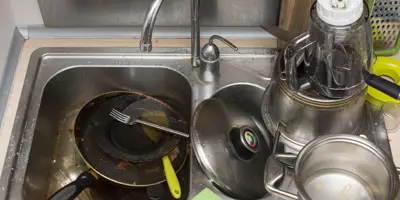
10 rules of basic hygiene (for kids who love to cook)
It’s never too early to teach budding chefs about basic food hygiene and how to prepare food safely. Read on for 10 essential food hygiene rules.

Learn how to clean the microwave with 3 easy methods
Discover the best ways to clean the microwave, including how to clean a microwave with lemon, vinegar, and how to get a clean microwave with baking soda.
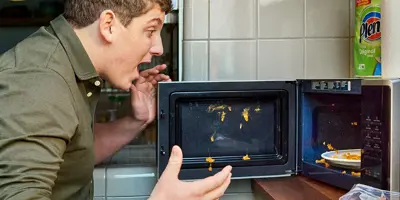
The 10 golden rules of kitchen hygiene
Find out how to keep on top of kitchen hygiene and reduce the risks posed by bacteria by learning these simple kitchen hygiene rules.
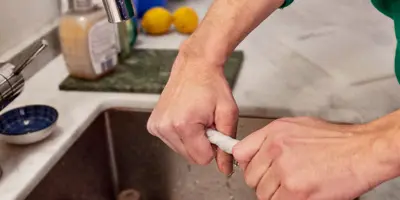
How to clean a deep fat fryer: 10 easy tips
Learn how to clean a deep fat fryer swiftly and safely! These 10 tips show you the best way to clean deep fat fryer interiors and exteriors.
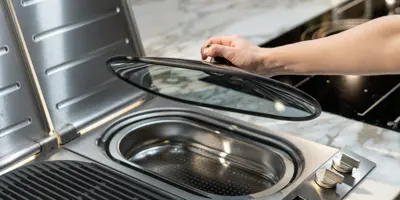
How to clean an oven after not cleaning it for a while
Looking for straight-forward oven cleaning tips? Read this simple step-by-step guide on the best way to clean an oven.
